Setting a strong direction is often cited as a defining characteristic of great leaders. Direction answers the questions “where are we going?”, “what’s important?”, and “what should we be working on?”
No matter the organization, finding the right direction is as vital as breathing.
Luckily for executives everywhere, there are buckets of tools, techniques, and McKinsey-approved frameworks to help leaders navigate those waters.
Most leaders I’ve met are fantastic at reading the market and figuring out where their company should go. But all the competitive intelligence and Strategy™️ in the world is useless if it’s stuck in a leader’s brain. The biggest leadership hiccup I see has nothing to do with deciding on the right direction. The challenge is communicating it to the rest of the team.
Sharing direction is hard but there’s a simple rubric you can follow to make sure you’re hitting the right notes. It starts with four levels.
The Four Levels of Direction Communication
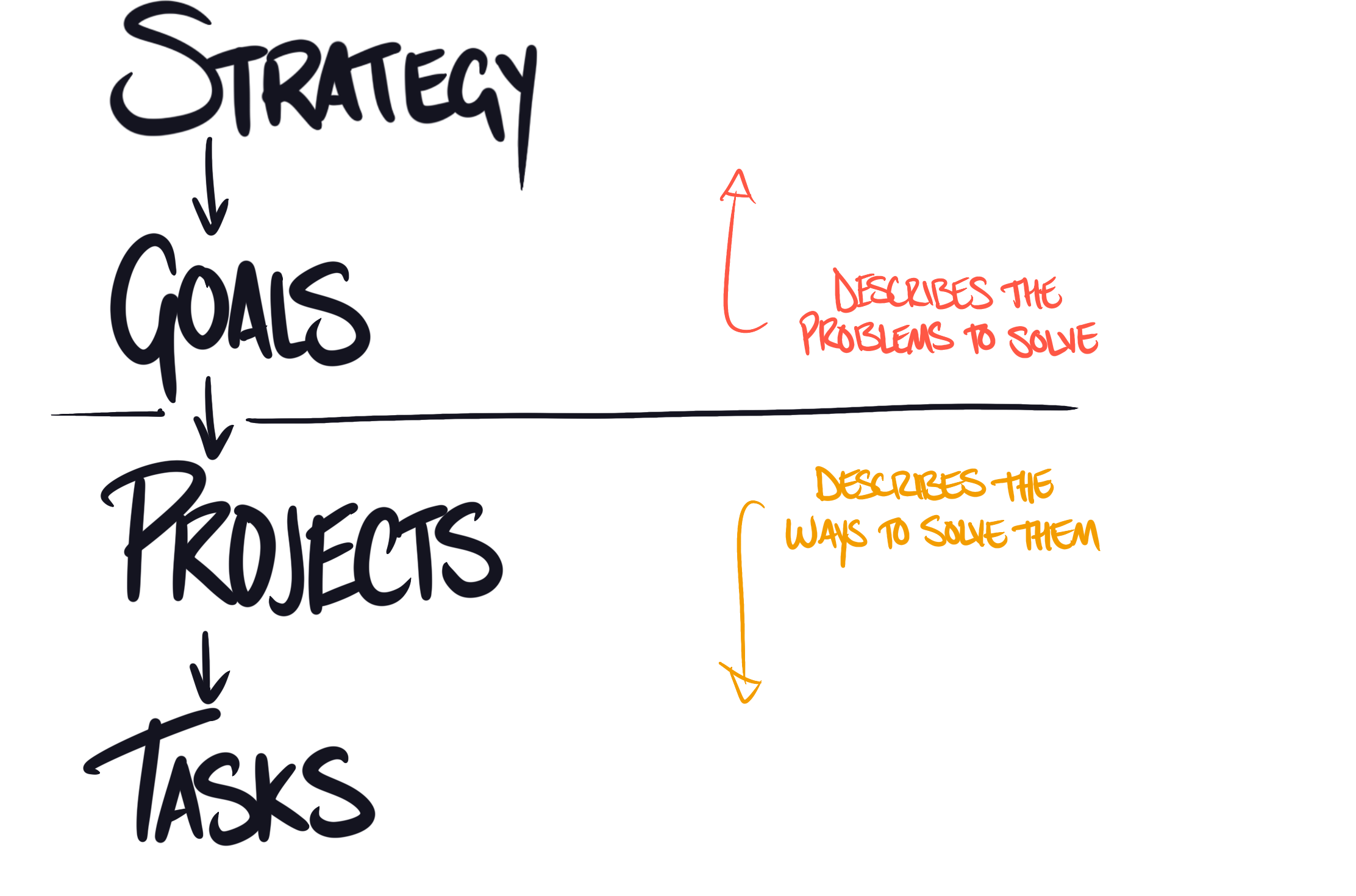
Names will differ from company to company but the pattern (and importance) stays the same
Every conversation about Direction fits under one of these four communication levels. The levels are hierarchical and each one fills a specific niche. If your team has a consistent flow of information at each level then they’ll thrive. If they’re missing information at a single level, they’ll struggle. If they’re missing information at many levels, chaos ensues.
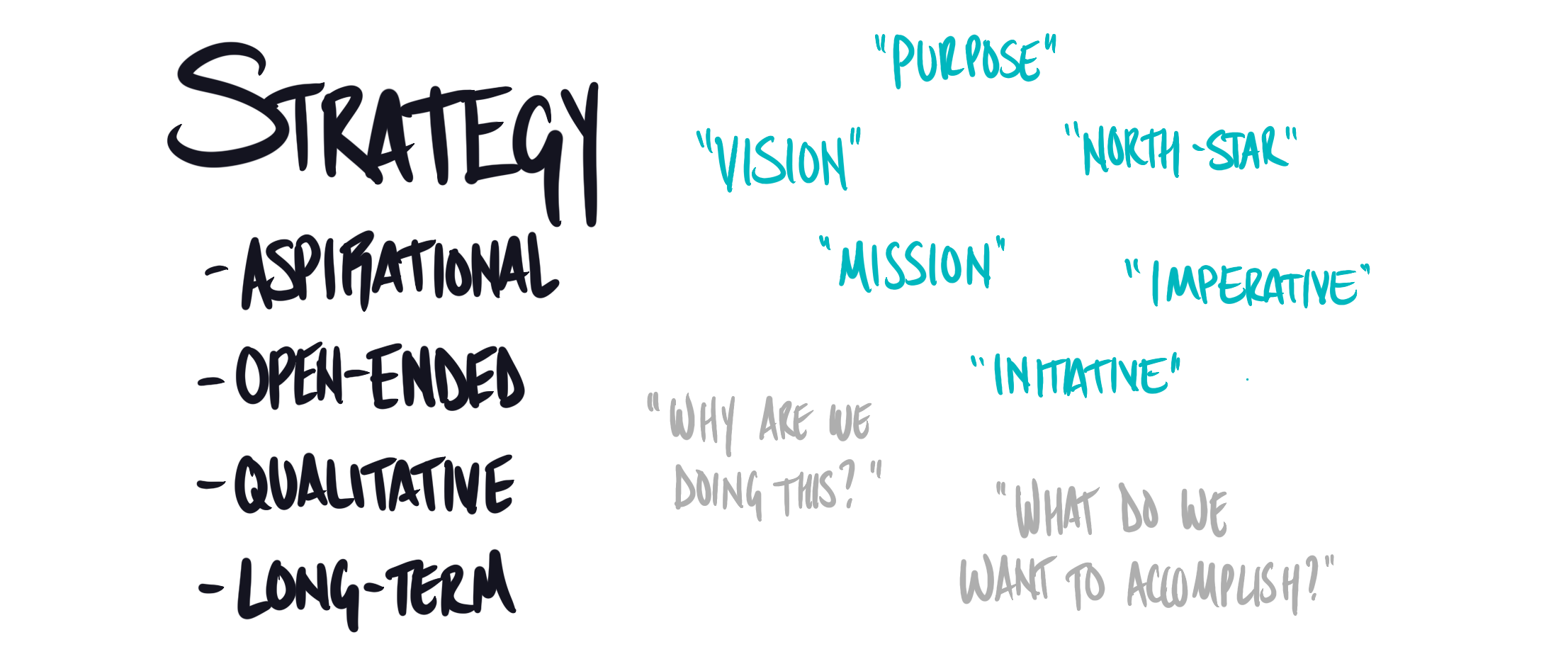
Strategy captures why you’re doing what you’re doing and what you hope to do. Strategies are aspirational, qualitative, and focused on the problem you want to solve (not the solution you have in mind). It’s open-ended and stretches many years out into the future. Strategy is like a distant point on the horizon that you hope, one day, to reach.

Goals are a subset of your Strategy. Goals don’t represent all the problems that need to be solved. They represent the problems that need to be solved right now. Goals are immediate, time-bound, and measurable. They deal with problems, not solutions, and usually only change on a specific cycle (3-month, 6-month, etc.). Goals capture the next few steps you’ll take to get closer to your Purpose.
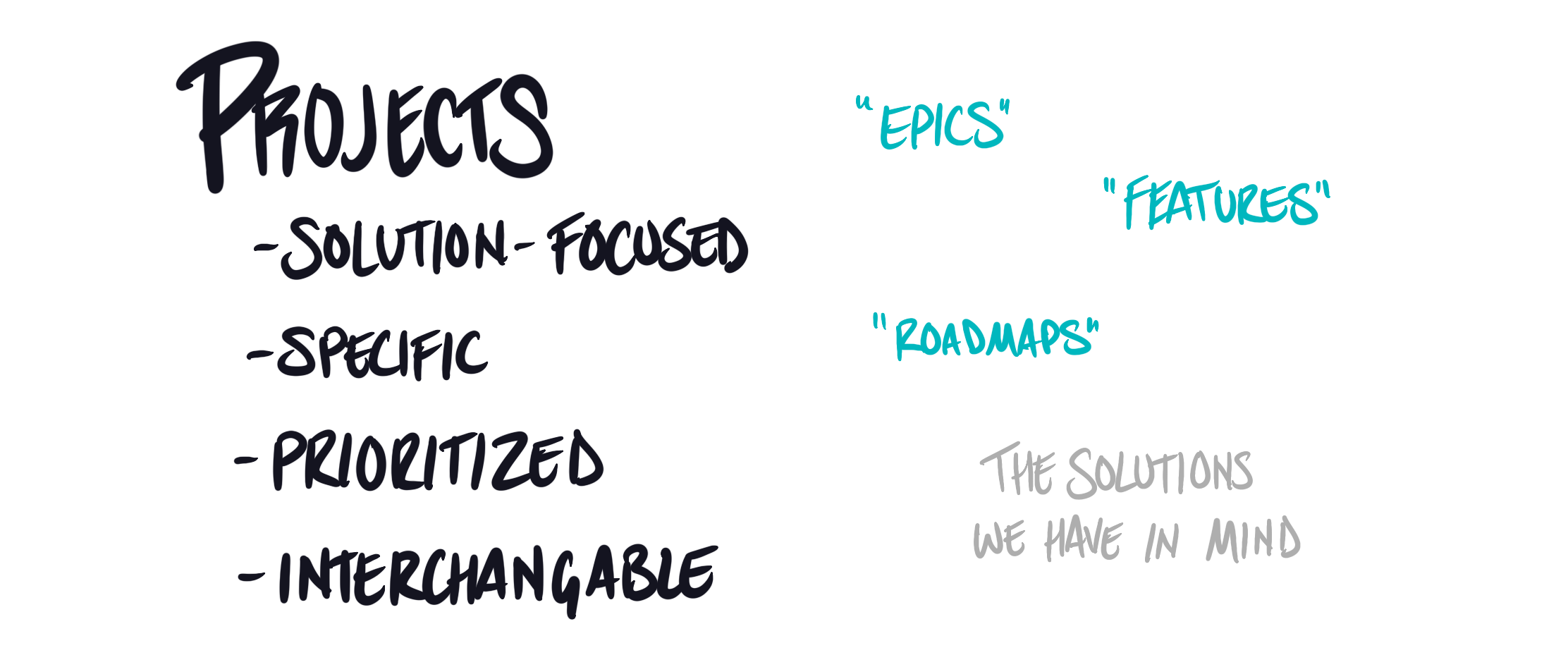
Projects are where we flip the switch from problem-focus to solution-focus. They’re a subset of Goals and are bound to the same time frames. They’re specific, prioritized, and interchangeable. They are bets. Bets that this specific piece of work will get you closer to your goal. If you learn a Project won’t help you achieve your Goal, stop work on that Project and switch to one with better odds of success.
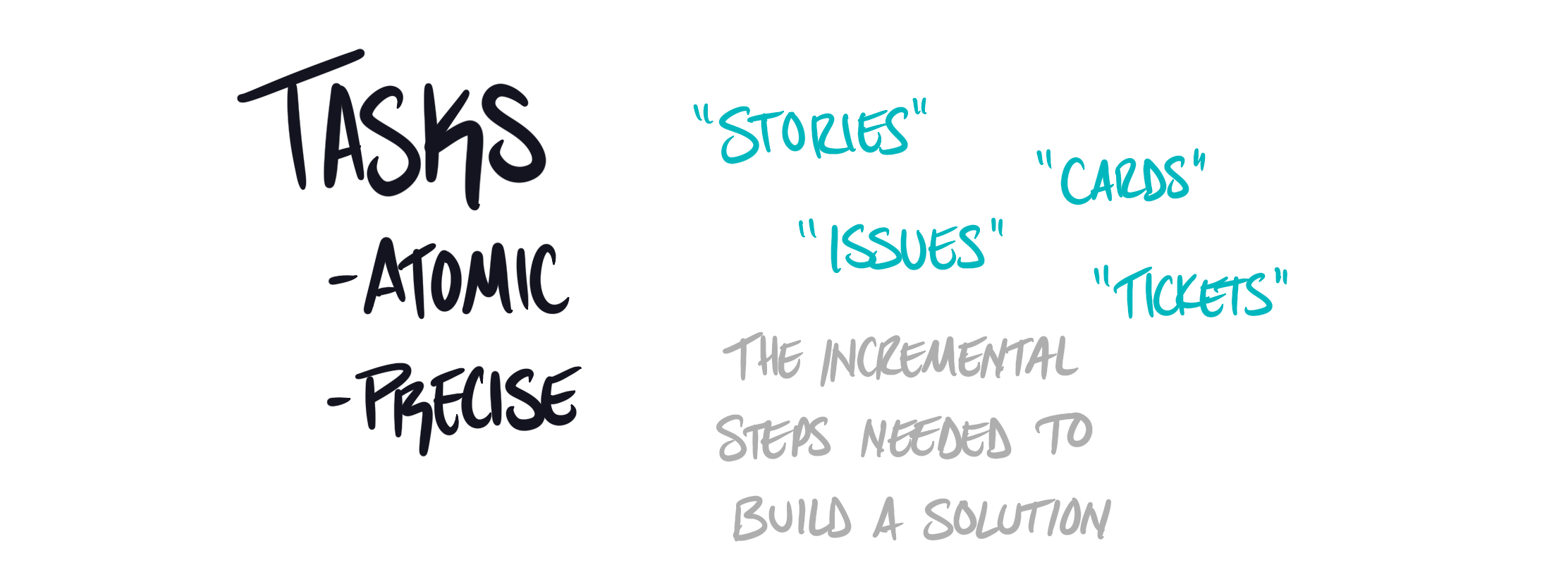
Tasks are the incremental steps that go into building a Project. They’re always refined and reprioritized as new information arises. Keeping them as small as possible minimizes waste and makes reprioritization easy.
These categories may seem straightforward. But it’s easy to neglect one or many levels of communication in the hectic day-to-day of our work. The consequences of doing so can be large.
Don’t touch on Purpose? Your people won’t understand why they’re doing what they’re doing.
Ignore Goals? They won’t have a way to translate Purpose to Projects and will depend on you to feed them work.
Leave out Projects? Without solutions in the works, your Goals will stagnate.
Neglect Tasks? Get ready for confusion and wasted work. Your Projects will drag on and the likelihood of hitting your Goals will plummet.
Owning direction communication at every level simultaneously is a full-time job. That may be possible in the smallest organizations but as you grow it becomes unmanageable.
There are plenty of ways to divide and conquer Direction communication. All approaches are valid on one condition. They have to touch on every level.

Single-team startups are the easiest to model. The division of labor is simple. There’s one team and it owns every level of communication.
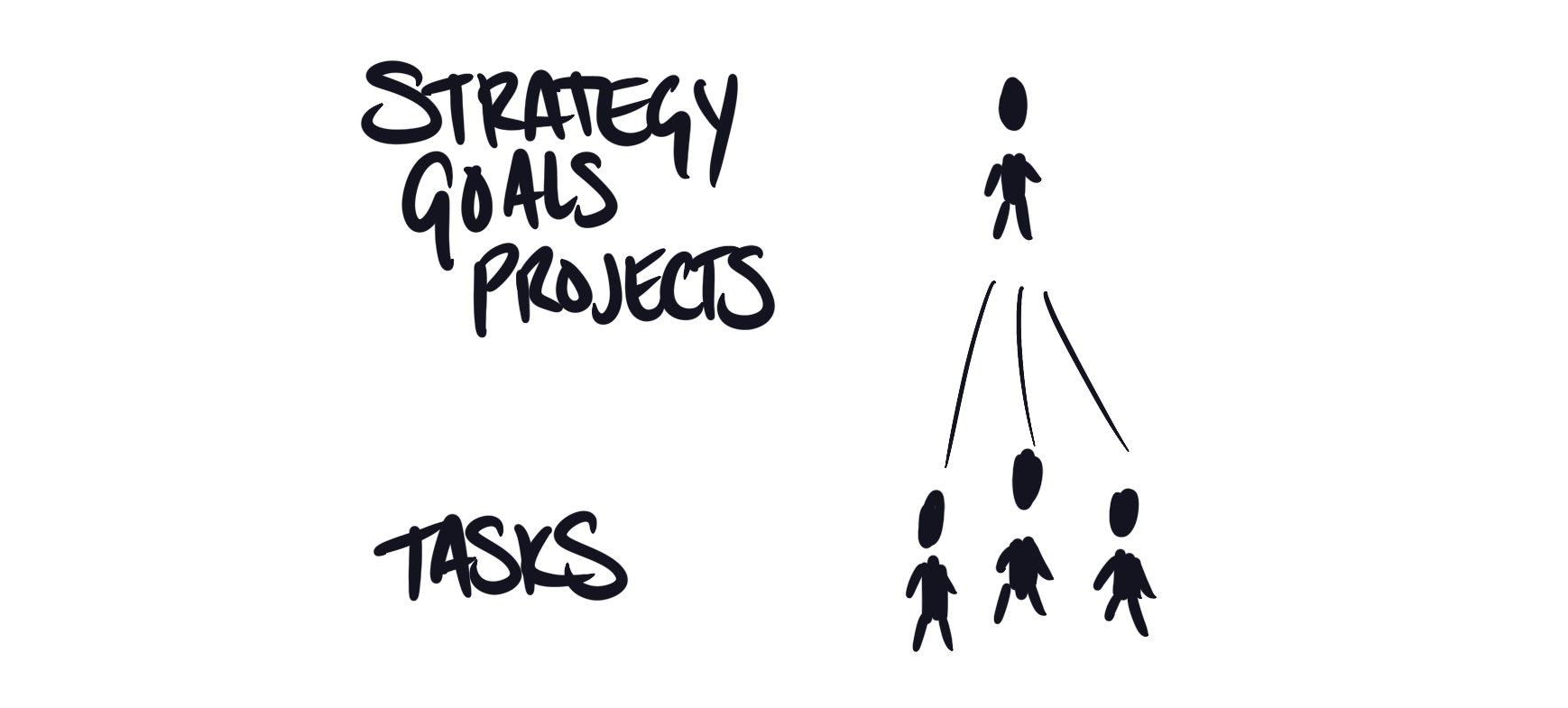
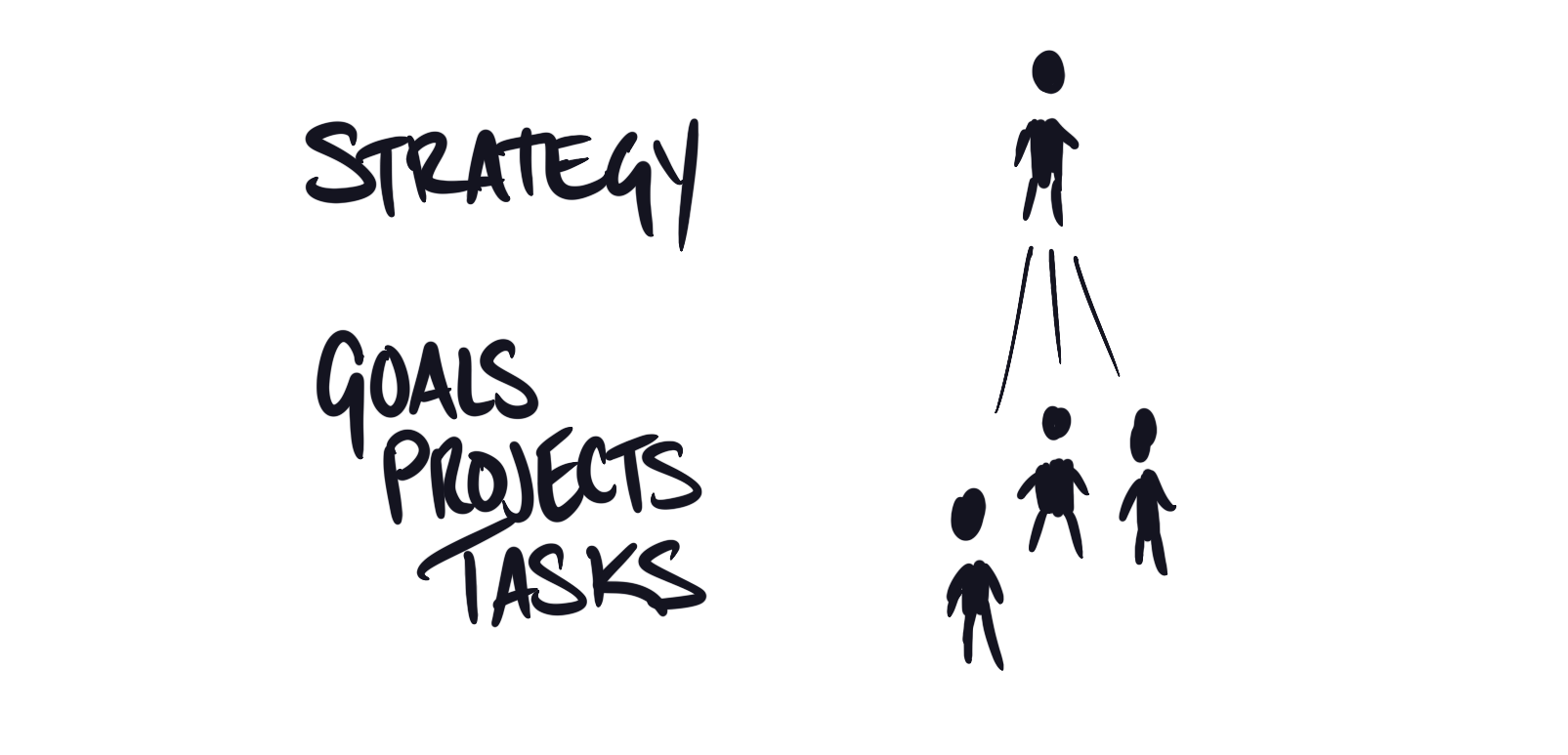
Mid-size companies have a bit more flexibility. Maybe that company has leaders with a strong vision who don’t like getting bogged down in the details (left). Or maybe that company has leaders who like to dig in and be much closer to the front lines (right). Both are reasonable approaches with various tradeoffs that I won’t get into here.
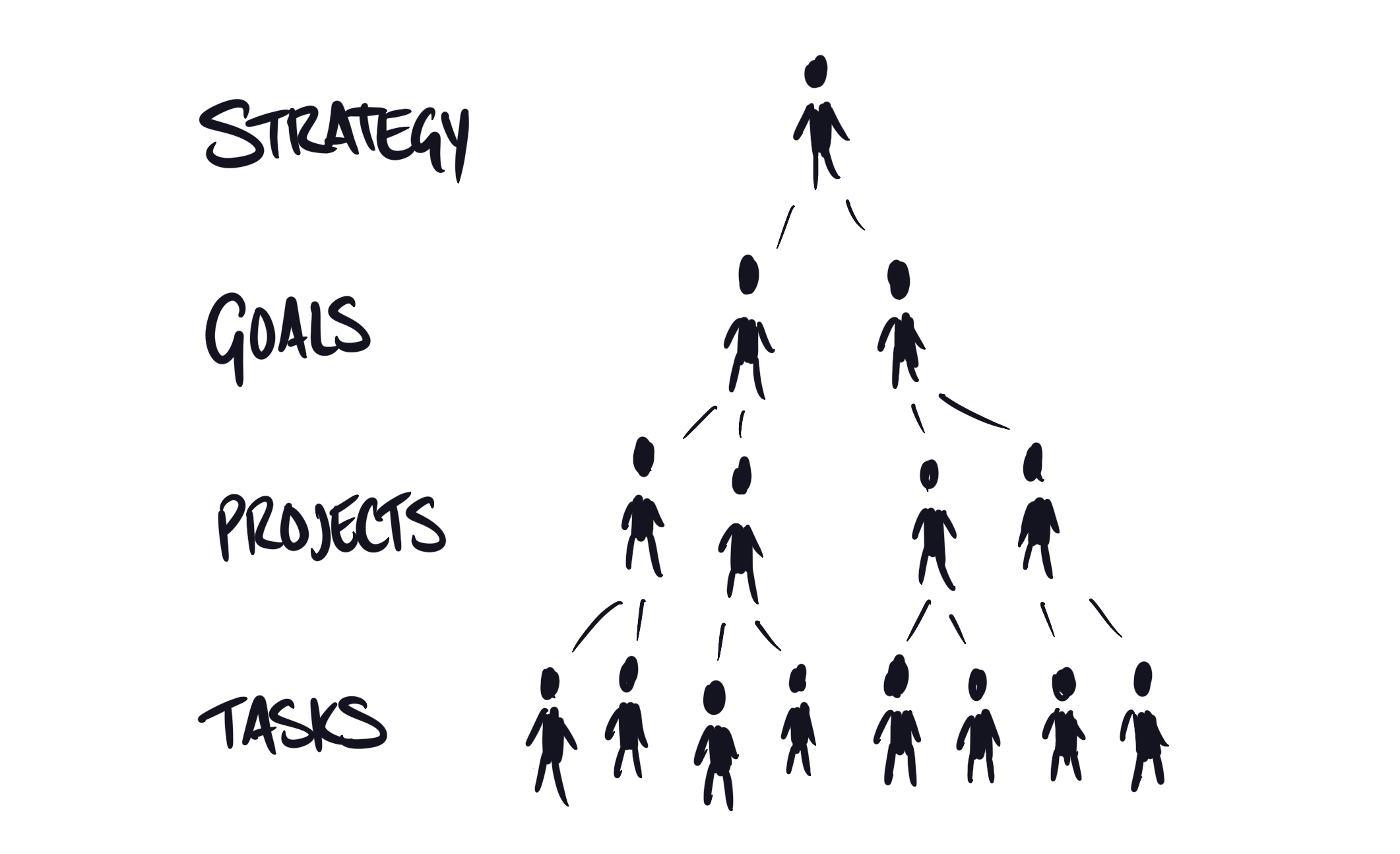
Some organizations are so complex that each level of the org chart ends up owning its own level of direction communication. That requires more coordination between levels but it’s a reasonable approach for some big companies.
Every arrangement can work well with the right people and routines in place. Deciding who owns a level of communication is less important than making sure that someone owns that level.
Adjusting ownership is easy. Rehabilitating an organization that has lost its way? That’s much harder.